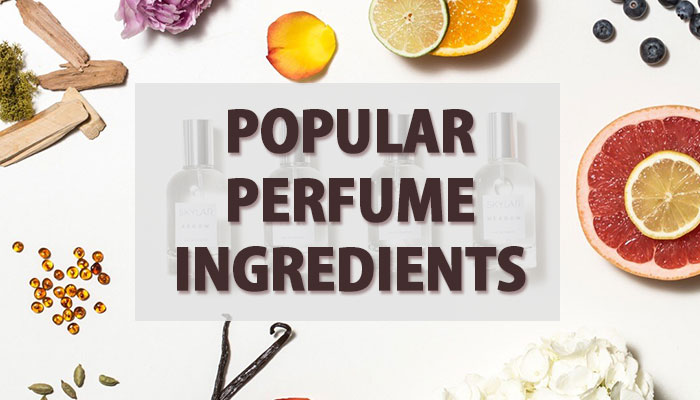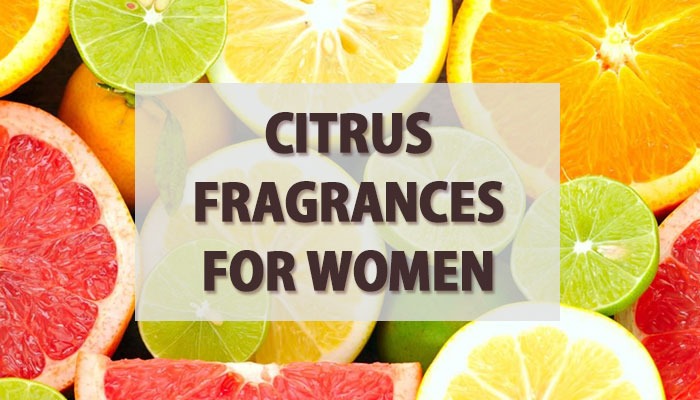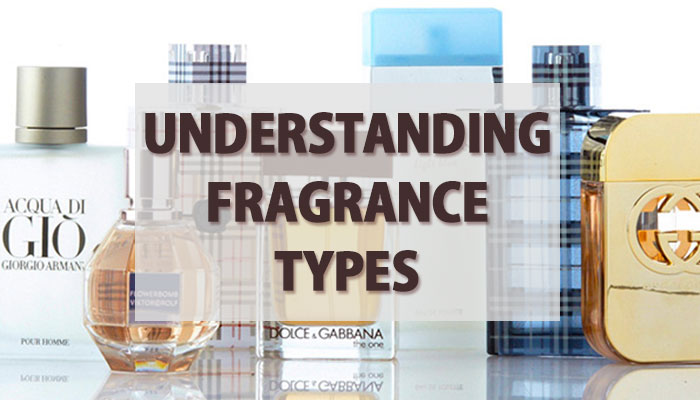If you’ve ever found yourself wondering about the origins of some popular perfume ingredients, we’ve put together an A to Z list of ingredients found in your favorite fragrances.
Agrumen – With a characteristic musky green odor, agrumen is an aldehyde found in many natural materials.
Aldehyde – An organic compound that is found in many natural materials, aldehyde can be artificially synthesized to create the aliphatic aldehydes which is used to give Chanel No 5 its sparkle.
Amber – Derived from the Baltic amber tree, Amber oil delivers a warm fragrance note with a heavy, powder body.
Ambergris – Usually reproduced synthetically, ambergris is a sperm whale secretion with a sweet, woody odor.
Ambrette – Frequently used as a substitute for true musk, ambrette is the oil obtained from ambrette seeds (from the hibiscus) and has a musk-like odor.
Amyris – Commonly found as a less-expensive substitute for sandalwood, amyris is from a white-flowering bush or tree found in Haiti and South America.
Benzoin – A sweet, warm, balsamic vanilla-like aroma derived from the Styrax tree.
Bergamot – Grown mainly in Italy, bergamot is a tangy oil expressed from the non-edible bergamot orange.
Calone – Watery, fresh, ozone accords that add a “sea breeze” or marine note to fragrances.
Cashmeran – Used to invoke the velvety smell or ‘feel’ of cashmere, cashmeran is a synthetic aldehyde with a spicy, ambery, musky, floral odor.
Castoreum – Reproduced synthetically, castoreum is an animalistic secretion from the Castor beaver used to impart a leathery aroma to a fragrance.
Citron – Citris fragrance notes are created from the zest of the citron tree’s fruit.
Civet – Used in small quantities, civet is often used to add depth and warmth to a fragrance and is derived from musk produced by a gland at the base of the African civet cat’s tail.
Clary Sage – Sweet to bittersweet smells with nnuances of amber, hay, and tobacco are found in the oil of this herb.
Coumarin – Usually derived from the tonka bean coumarin can also found in lavender, sweetgrass, and other plants and is a commonly used perfume compound that smells like vanilla.
Frangipani – Also known as West Indian jasmine, the flowers are often very fragrant, the palette of their smells covers lots of nuances: soft, fruity, peachy, and creamy on the canvas of the soft gardenia-like aroma
Frankincense – The aroma is resinouse, earthy and also has a slightly fruity/sweet, warm, spicy attitude to it. Frankincense is a gum resin from a tree found in Arabia and Eastern Africa and can also be known as Olibanum.
Galbanum – Often described as earthy or forest-like, this fragrance compound is valued for its ability to impart a rich, spicy green scent.
Guaiac Wood – This fragrance compound is valued for its ability to impart a rich, spicy green scent which is often described as earthy or forest-like.
Hedione – Citrusy but floral smelling at the same time, hedione is one of the 900 plus molecular components found in jasmine.
Heliotrope – A delicious scent which shifts between marzipan, vanilla, cherry pie and almond. Also known as “cherry pie flower”, heliotrope has an odour profile that is powdery, like vanilla meringue with a helping of almond.
Indole – Created synthetically and when diluted, indole conjures up jasmine and orange blossom, and goes beautifully with green notes, and other floral ingredients. In pure form indole can resemble the scent of mothballs
Iso E Super – One of the most versatile odor molecules, Iso E Super is an aroma chemical described as a smooth, woody, amber note with a velvet-like sensation.
Jasmine – One of The 6 Most Expensive Perfume Ingredients in the World, jasmine flowers are best known for their aromatic scent.
Labdanum – Deep, powerful, leathery and ambery notes derived from the rock rose bush.
Monoi – An oil native to Tahiti, that is the result of the native Tahitian gardenia macerating in refined coconut extract for 15 days and is sometimes called Monoi de Tahiti.
Muguet – Usually synthetically reproduced. muguet is a feminine scent possessing a blend of fresh lily of the valley.
Musk – A perfume note traditionally extracted from the anal gland of the male musk deer. It evaporates slowly resulting in a long-lasting smell.
Myrrh – Described as woody, warm, aromatic and pungent, and slightly medicinal, myrrh is a gum resin produced from a bush found in Arabia and Eastern Africa.
Narciussus – The scent of narcissus oil is strong and rich; it reminds of smell of dark green leaves with traces of hyacinth and jasmine.
Neroli – A light sweet-floral fragrance with an element of citrus often referred to as a refreshing, honeyed floral aroma. Neroli is a citrus oil distilled from the blossoms of either the sweet or bitter orange tree and known in Italian as zagara.
Oakmoss – A strong, earthy-mossy aroma derived from a lichen that grows on oak trees. Oakmoss is known for its aroma, which is heavy and oriental at first, becoming refined and earthy when dried, reminiscent of bark, foliage and seashore.
Opopanax – Also known as sweet myrrh, opopanax oil is derived from a herb that grows in the Middle East, North Africa and the Mediterranean which produces a scent similar to balsam or lavender.
Orris – One of The 6 Most Expensive Perfume Ingredients in the World and derived from the iris plant delivering a flowery, heavy and woody aroma.
Osmanthus – Valued for its delicate fruity apricot aroma, osmanthus is derived from a flowering tree native to China.
Oud (Oudh) – One of The 6 Most Expensive Perfume Ingredients in the World, but also one of the most used fragrant ingredients, Oud refers to wood from the Agar tree found mostly in Southeast Asia and has a heavy, intoxicating and rich smell that combines wood, incense, and ambergris
Ozone – A synthetic note intended to mimic the smell of fresh air right before a thunderstorm.
Patchouli – Described as having a dark, musky-earthy aroma profile, reminiscent of wet soil. Patchouli is a bushy shrub originally from Malaysia and India and delivers a musty-sweet, spicy aroma that is often used as a base note.
Rose – One of The 6 Most Expensive Perfume Ingredients in the World, rose is one of the main flower notes used in perfumery.
Rose de Mai – Produced by solvent and then alcohol extraction, Rose de Mai is the traditional name given to Rose Absolute (rose essential oil).
Sandalwood – One of the oldest known perfumery ingredients, sandalwood is an oil from the Indian sandal tree and commonly used as a base note.
Tonka Bean – Often used as a less-expensive alternative to vanilla, tonka bean is derived from a plant native to Brazil with an aroma of vanilla with strong hints of cinnamon, cloves, and almonds.
Tuberose – Like an explosive bouquet of white flowers, resembling those of a lily, tuberose’s extreme complexity gives the olfactive illusion of different flowers and their extracts.
Vanilla – Highly fragrant, popular scent serived from the seed pod of the vanilla orchid.
Vetiver – highly important ingredient in masculine perfumes, vetiver is a grass with heavy, fibrous roots, which are used to distil an oil that smells of the moist earth with woody, earthy, leather and smoky undertones.
Ylang Ylang – Used in expensive floral perfumes, Ylang Ylang is an Asian evergreen tree with fragrant flowers.










